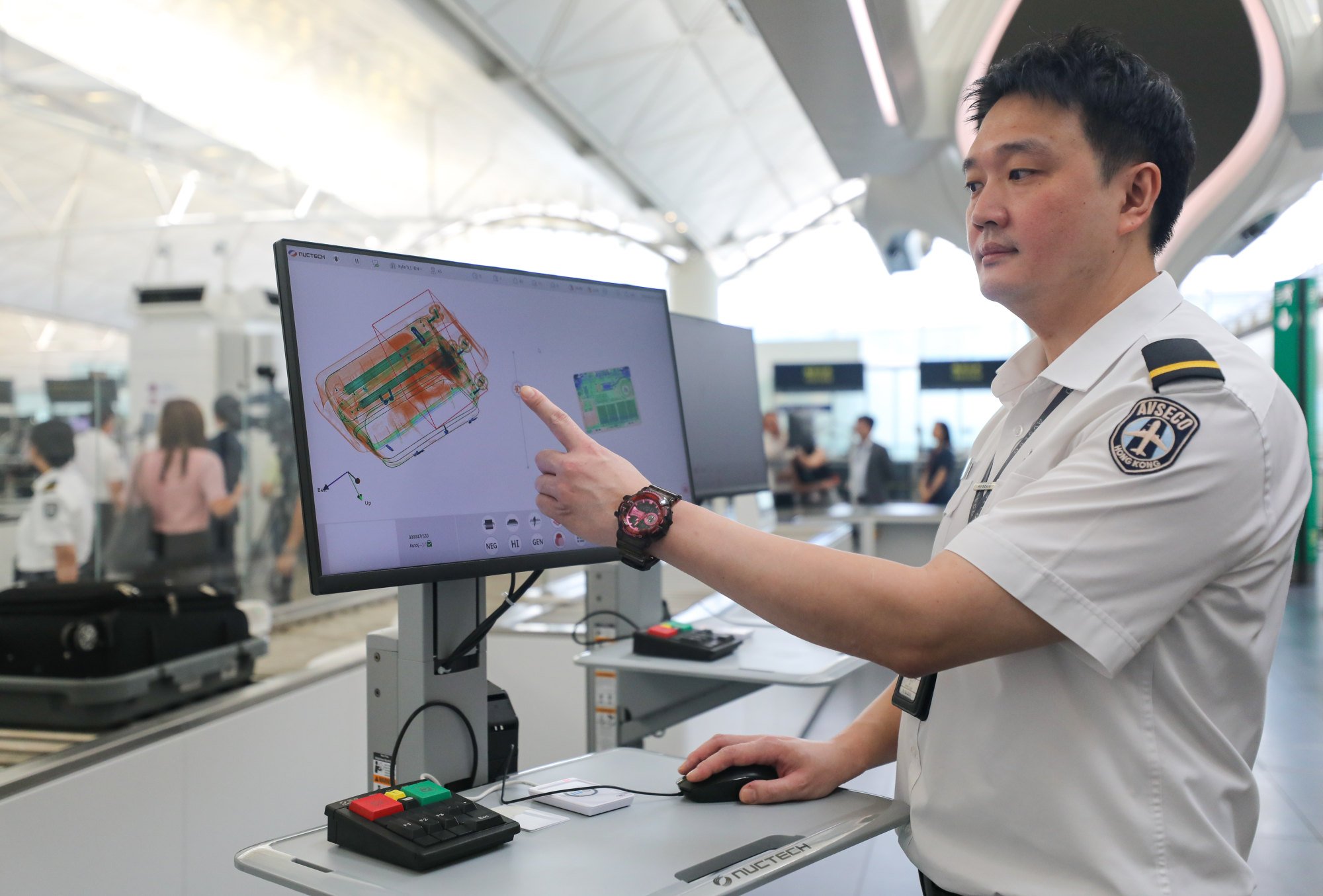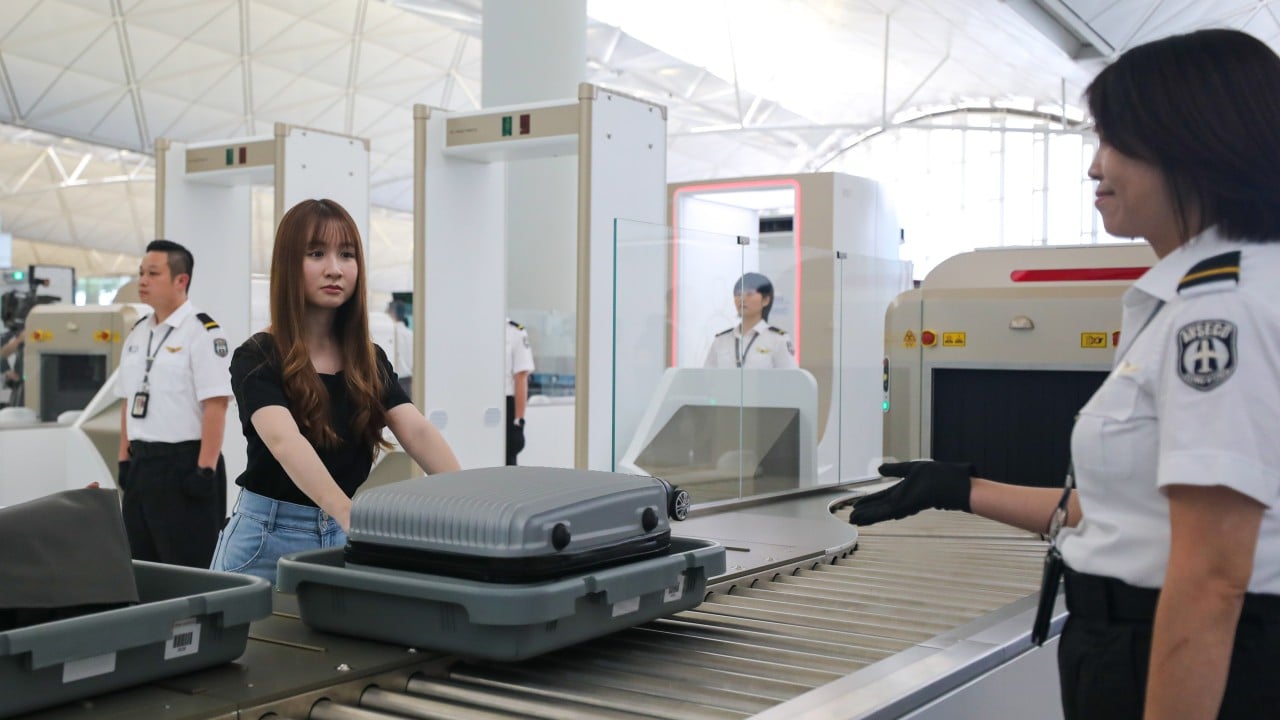Hong Kong air travellers can keep liquids, gadgets in carry-on bags thanks to HK$800 million airport security upgrade
Travellers will be able to keep liquids and electronics in their hand luggage when they pass through security at Hong Kong airport from next week, thanks to an HK$800 million (US$102 million) upgrade of the system that includes smart screening.
Steven Yiu Siu-chung, the Airport Authority’s executive director of airport operations, said on Wednesday that the revamp would be introduced in phases over the next two years, with 50 new smart security screening channels and 32 full-body scanners to handle passengers and airport personnel.
“Hong Kong will become the world’s first airport to fully adopt a smart security screening system,” he said. “We hope 98 per cent of passengers will complete the security screening process within 4½ minutes.”
Yiu said the upgrade aimed to boost the site’s departure screening capacity by 20 per cent to about 10,000 passengers over that period.
The first four new security screening channels will be installed at the south and north departure halls in the airport’s first terminal next Tuesday.
The airport’s departure halls currently boast 35 security lanes, with each handling 240 passengers per hour.
Hong Kong will become the world’s first airport to fully adopt a smart security screening system
The smart revamp will reduce the number of lanes to 28, with each able to process 360 people every hour.
The smart upgrade includes an automated baggage handling tray that can accommodate three people at the same time, and a new computerised tomography (CT) X-ray machine that will be introduced to replace existing scanners.
The devices will scan passengers’ carry-on luggage and generate a three-dimensional image for analysis, reducing scanning times from 15 to 10 seconds.
The new process also no longer requires passengers to remove electronic devices and liquids from their hand luggage. But liquids exceeding 100ml will still be prohibited.
“The reason for taking out the laptop computers from the carry-on luggage during current security checks is because they block other items under the existing two-dimensional X-ray scanning images,” Yiu said.
“The new system allows security personnel to have a three-dimensional view to analyse the internal structure of the luggage from different angles, allowing easier identification of potential contraband.”
The new full-body scanners will replace manual checks for passengers who set off metal detector alarms, reducing the need for contact between travellers and security staff.
“With the new system, three passengers can simultaneously prepare for the screening process,” Yiu said.

But Yiu said there was currently no timetable for when the airport’s second terminal would receive the smart security upgrade.
The announcement came hot on the heels of a computer glitch that wiped real-time flight data from the airport’s display screens on Sunday, causing some passengers to miss flights.
Yiu said there was room for improvement in terms of backup measures and emergency preparedness, but stressed the new security channels operated individually and each had their own computer system.
“[The system] is not reliant on an internet connection to link all security screening channels together. So a situation where all channels are unable to operate simultaneously will not occur.”
Jacob Cheung Tak-keung, executive director of Aviation Security Company, which operates the airport’s security services, said about 3,100 staff had been trained to operate the new system, adding it would allow for flexibility in terms of scheduling manpower.
“With the introduction of new technology, we expect that during non-peak hours, manpower utilisation can be reduced by a quarter,” he said, adding the manpower requirement might remain the same during busy periods.
Hong Kong rolled out its Smart City Blueprint 2.0 in 2020 in an effort to improve residents’ lives through more than 130 innovation and technology initiatives spanning areas such as mobility, living, environment, people, government and economy.


